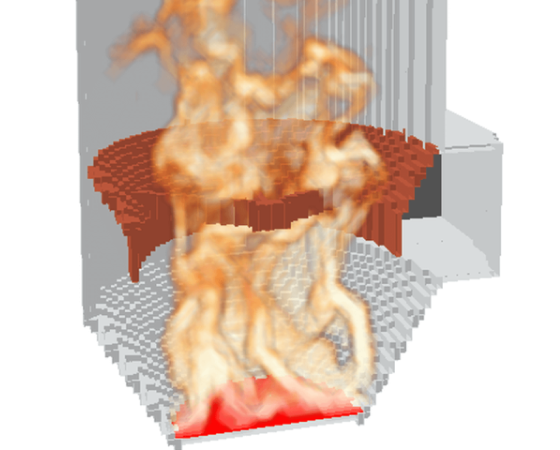Semiconductor
Performance-Based design
Operational constraints and existing conditions often create challenges when implementing prescriptive fire and explosion protection requirements in applicable codes and standards. Retrofitting existing buildings can be particularly challenging, if even viable.
FRA has extensive experience implementing performance-based designs for various commercial and industrial facilities. Our interactive approach identifies stakeholders, establishes performance goals and objectives, and utilizes state-of-the-art engineering methods and computational models to develop innovative designs. Our engineers have demonstrated success in taking performance-based design projects from concept to completion, and approval by authorities having jurisdiction, including fire code officials and insurers.


Alternative Materials and Methods Requests (AMMR)
Model building and fire codes allow the use of AMMRs and
Variances to demonstrate that an alternative design approach meets or exceeds the prescriptive code requirements.
FRA employs advanced techniques and knowledge of code requirements to assist our clients with developing unique and innovative solutions that meet the expectations of the project and can be approved by the Authority Having Jurisdiction (AHJ). Development and acceptance of AMMRs and Fire Variances oftentimes require discussions with the AHJ. FRA has extensive experience negotiating with AHJs and gaining approval of AMMRs and Fire Variances.
Fire Dynamics Simulator (FDS)
Fire Dynamics Simulator (FDS) is a computational modeling tool developed by the National Institute of Standards and Technology (NIST) that is widely used in fire protection engineering. FDS is a powerful tool for simulating fire behavior and predicting fire dynamics in complex environments, providing valuable insights for fire protection design and analysis.
FRA applies FDS to a wide variety of fire, smoke, and gas dispersion analyses. From designing smoke control systems to evaluating sprinkler suppression effectiveness and hazardous gas dispersion, our engineers have years of in-depth experience in using FDS to support our client’s design challenges.


People Movement
FRA engineers who specialize in people’s movement utilize the latest computational tools to assess and optimize people’s movement strategies, allowing our engineers to design effective evacuation plans, evaluate emergency egress routes, and ensure the safe evacuation of occupants.
One of the key capabilities for people’s movement is the ability to use agent-based modeling or crowd simulation techniques. Our engineers can model the movement of occupants in buildings, transportation hubs, stadiums, or other crowded spaces during a fire emergency. This includes factors such as human behavior, demographics, mobility limitations, and response to fire alarms, which can impact the flow of people during an evacuation.
Fire Risk Assessment
Our team has extensive experience in conducting fire risk assessments for a variety of applications, including energy storage, utilities, oil & gas, commercial, industrial, and residential properties. NFPA 551 guides on assessing the risks associated with fires, including evaluating the likelihood of a fire occurring, the potential for property damage, and the risk to occupants, the public, and emergency responders. Our fire risk assessments use the latest data and techniques in fire science and engineering to provide a comprehensive understanding of the associated risks. We use state-of-the-art software and analysis techniques to model fire scenarios and develop tailored mitigation strategies that comply with regulations. Our detailed reports clearly outline the risks and recommend specific actions to reduce them, while our team provides ongoing support to help clients manage and mitigate fire risks.


Risk Assessment
Risk assessment involves the evaluation of the likelihood and impact associated with the realization of a hazard(s). When evaluated against risk tolerance, risk assessment provides a powerful tool for identifying priorities, developing optimized risk management strategies, and ensuring that acceptable risk is achieved.
FRA has a wealth of experience in risk assessment, including the application of qualitative, semi-quantitative, and quantitative methods. We work with our clients to understand their needs and develop an approach that achieves stakeholder goals and meets applicable regulatory requirements.
